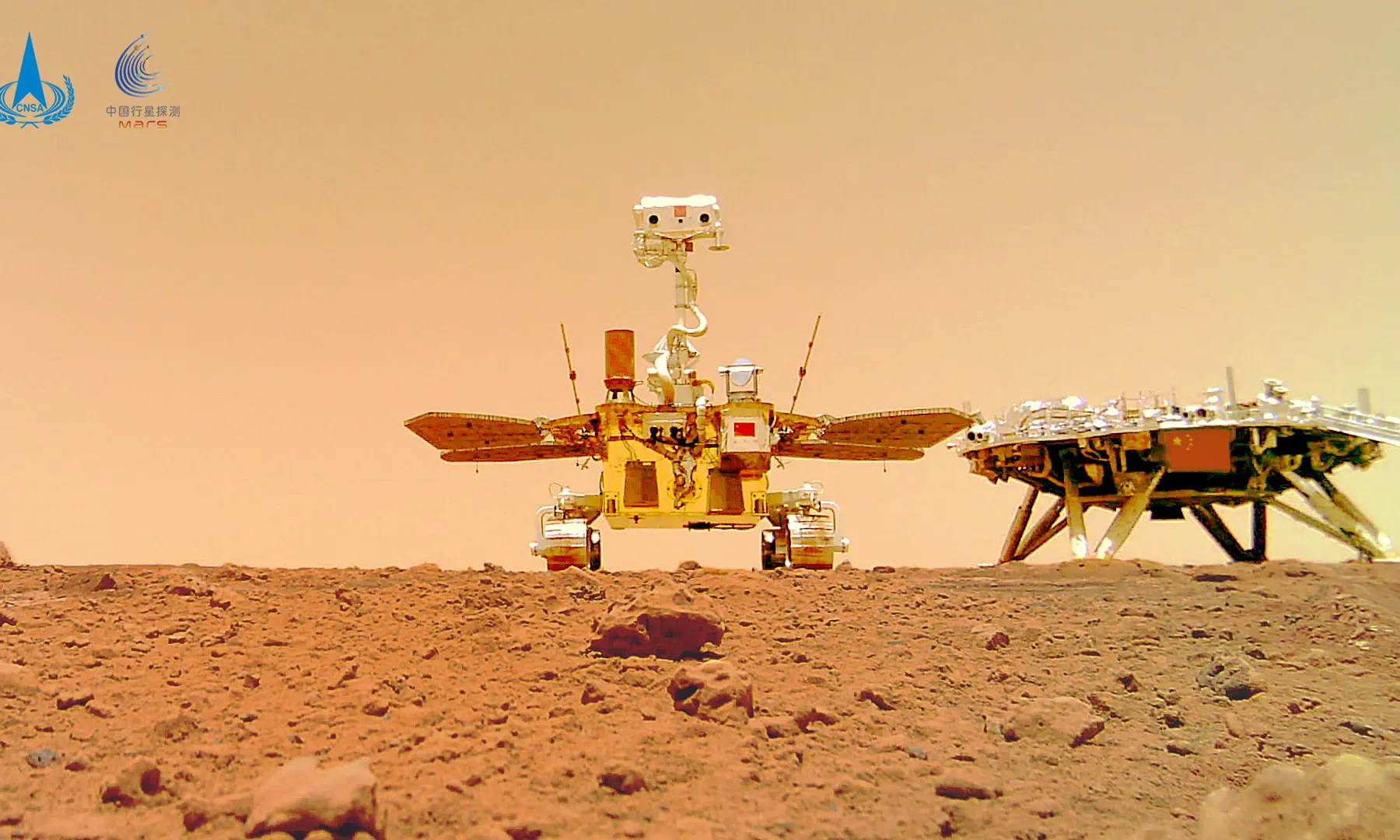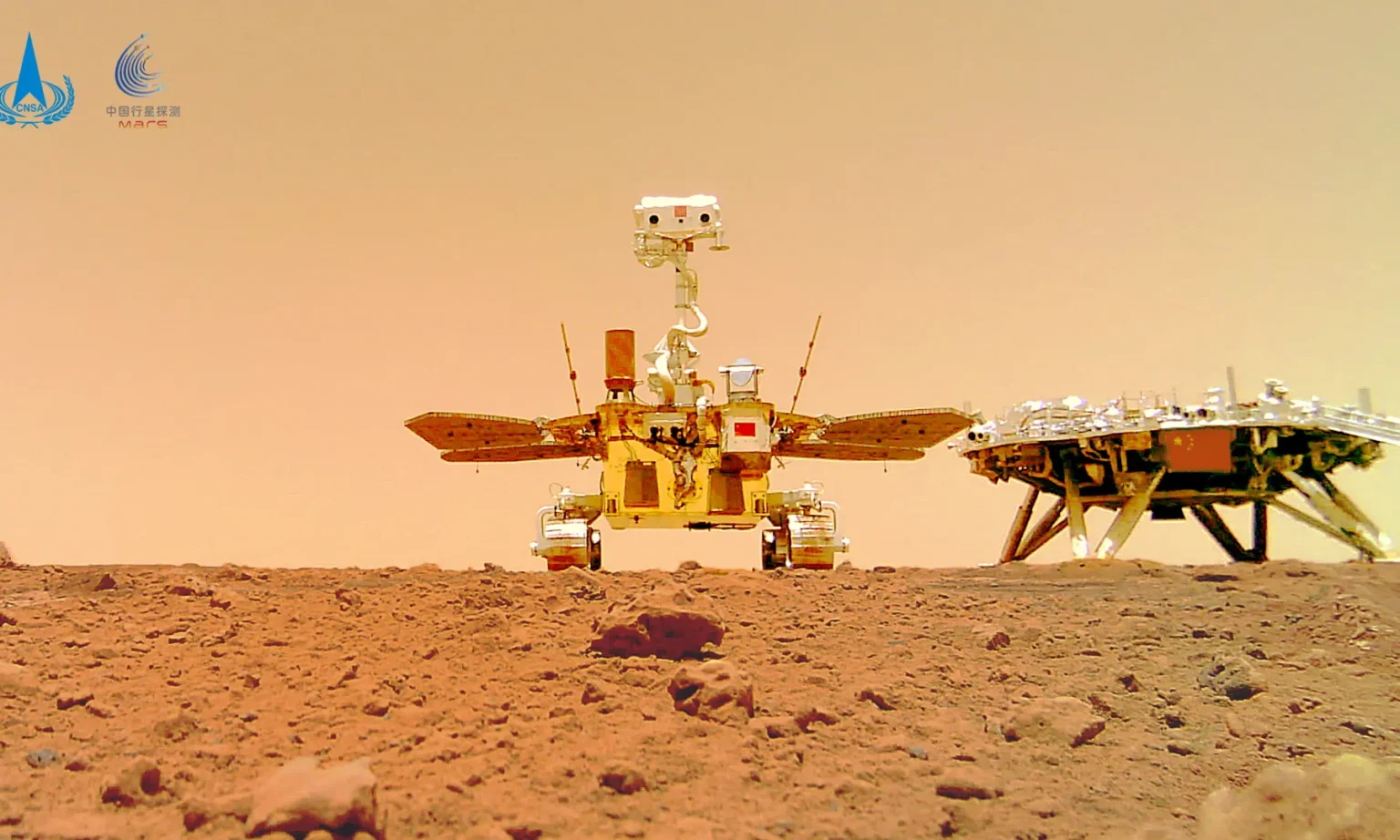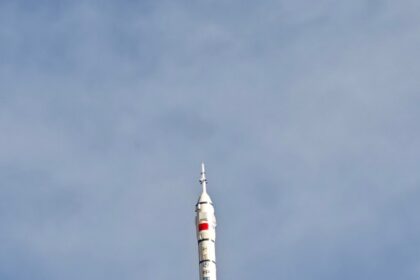Is something amiss with Zhurong, China’s first Mars rover? The vehicle was supposed to come out of its months-long hibernation last month, but the Chinese space agency has been tight-lipped about its status, leading some researchers to speculate that it might not have survived the harsh Martian winter and dust storms. However, others remain optimistic that Zhurong will wake up in the next few months as temperatures warm up enough to charge its battery and as dust storms settle down.
Zhurong was launched from the orbiter Tianwen-1 and landed in the Utopia Planitia impact basin in Mars’s northern hemisphere on May 15, 2021. It traveled nearly 2 kilometers from its landing site over the space of a year, exceeding its original mission goal of three months. The rover scoped out rocks, craters, sand dunes and even found evidence of past flooding from below the planet’s surface.
Zhurong was launched from the orbiter Tianwen-1 and landed in the Utopia Planitia impact basin in Mars’s northern hemisphere on May 15, 2021
CNSA
Zhurong was launched from the orbiter Tianwen-1 and landed in the Utopia Planitia impact basin in Mars’s northern hemisphere on May 15, 2021. It traveled nearly 2 kilometers from its landing site over the space of a year, exceeding its original mission goal of three months. The rover scoped out rocks, craters, sand dunes and even found evidence of past flooding from below the planet’s surface.
Zhurong down due to a major dust storm
Last May, the China National Space Administration (CNSA) announced that it had powered Zhurong down due to a major dust storm. Dust swirling around the atmosphere reduces the amount of solar radiation that reaches the surface of Mars, and dust that settles on the rover’s solar panels can also reduce the amount of sunlight it receives, affecting its power generation. Zhurong’s solar panels are made of dust-repellent materials and can be angled to prevent dust settling, but combating dust is an ongoing problem for many Martian missions.
Surviving Mars: Zhurong Battles Extreme Cold
In May, the CNSA said that temperatures would drop to –20 °C during the day and –100 °C at night and were expected to fall further. Cold temperatures mean that Zhurong needs more energy to keep its battery warm and prevent it from failing. Engineers typically shut off all scientific instruments to save energy, keeping only the communications system on for the rover to alert Earth when it wakes up.
The latest contact

In September, a member of the Chinese team said they expected Zhurong to make contact when its energy levels had risen to 140 watts, and the temperature of its components rose above –15 °C. They had initially expected that to happen by late December, at the end of the Martian winter and dust storm season. However, the absence of an official update from the Chinese space agency has raised concerns about the rover’s fate.
While researchers often develop models of the Martian atmosphere that can be used to predict when solar-powered spacecraft will revive, they have lots of uncertainties, says Chide. “It is too soon to say that there is something wrong,” he says. But scientists hope that if the rover eventually makes contact, it will trundle to unusual geological formations nearby, including a barely visible ghost crater and a possible mud volcano. Together, these findings could help scientists understand more about the history of water on Mars.





